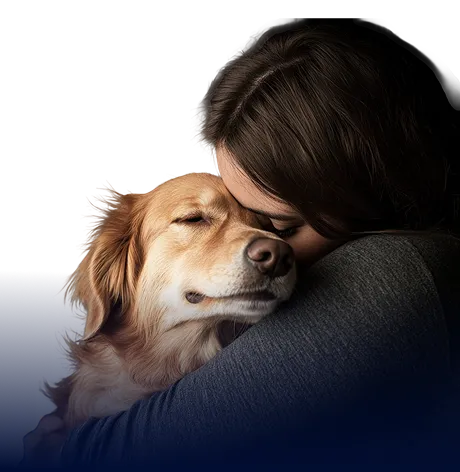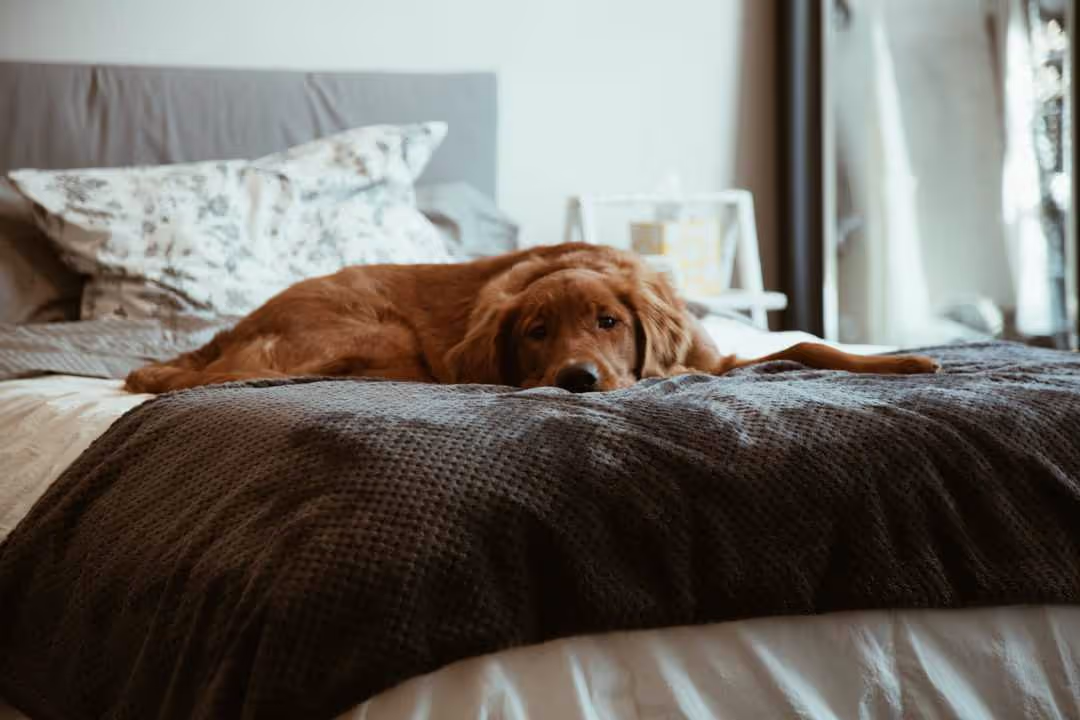For the Purrbabies


If your pup’s having trouble sleeping, it may also be keeping you up at night. Learn about insomnia in dogs and ways to help your dog snooze.

Dogs need a lot of sleep, and adult dogs can spend up to 50% of their days snoozing. For puppies and senior dogs, this number can be as high as 80%. Insomnia is the most common sleep problem affecting humans. Up to 1 in 3 people experience some trouble falling or staying asleep during their lifetime. While much less common in canines, dog insomnia is nonetheless a serious sleep disorder. Knowing how to recognize insomnia in dogs and when to seek treatment is important knowledge for any responsible owner.
You may easily recognize obvious signs and changes in your pup’s body language when they’re stressed. These can include lip licking, whale eye, pacing, hiding, and more. Sleep issues may be harder to notice, as your dog’s behavior is challenging to see and recognize (because you’re probably sleeping too). There are several issues for a pet parent to be aware of regarding dog sleep patterns.
Narcolepsy is a nervous system disorder seen in both humans and dogs. It’s marked by excessive daytime sleepiness and episodes of consciousness loss, which may be brought on by hyperactivity. Narcolepsy is often hereditary and caused by low levels of the chemical hypocretin.
While not life-threatening, it may affect energy levels and quality of life over time. There’s no current cure for narcolepsy, but a veterinarian may prescribe medication to help combat symptoms in severe cases.
Sleep apnea may make you think of snoring partners and breathing machines, but the condition can affect canines as well. As in humans, sleep apnea in dogs is characterized by snoring and/or labored breathing while sleeping.
Frequent accompanying sleep interruptions can have long-term effects on dogs’ energy levels.So, a visit to the vet is crucial if you suspect your dog may be experiencing sleep apnea. While generally rare in dogs, the condition is more common among brachycephalic (flat-faced) breeds like the American bulldog and pug.
Research suggests that dogs do dream, and you’ve probably smiled at your dog’s twitchy paw pads during a nap. Twitching, vocalization, and even running may occur during a dog’s rapid eye movement (REM) sleep cycle. This is often common and harmless, but the behavior may become a disorder over time.
Dogs with REM sleep behavior disorder may be prone to repeated violent movements in their sleep. Waking up a dog in this state can cause confusion or even aggression, leading to a bite without warning (hence the phrase, “let sleeping dogs lie”). This disorder may be treated with medication, so you should seek a vet’s opinion if you suspect this might be an issue.
Healthy dogs can spend up to half the day sleeping, and this is normal. If you think your dog isn’t getting enough sleep, there are a few potential insomnia symptoms to look out for, including:
👉 If you notice these symptoms, be sure to visit the vet so they can examine your pet and rule out any other medical conditions.
Often with canine insomnia, a visit to the vet or behaviorist may reveal underlying physical or mental issues that could be at play. Some potential factors leading to insomnia in dogs include:
Given the uncertainty surrounding the causes and symptoms of insomnia in dogs, a vet visit is always your best bet. The most important thing to do is rule out any underlying physical or mental issues which may need immediate attention. Once you’ve ruled out other serious medical issues and sources of stress, there are a few different strategies to try to help your dog sleep better at home.
👉 Always ask your dog’s veterinarian before introducing a new supplement into their diet.
For some dogs, medication may be used as a short-term solution while they develop better mechanisms for consistent sleep. Others may require a more long-term regimen. Either way, it’s important to consult your veterinarian before treating your dog with any over-the-counter solutions. We hope this guide will help your dog (and you) get plenty of zzzs!
Adult dogs typically need to sleep about 50% of the day, while puppies and senior dogs may sleep up to 80% of the day. If your dog’s sleep patterns significantly deviate from these norms, it might indicate a sleep disorder.
Signs of canine insomnia include excessive whining, crying, or barking at night, inconsistent sleep patterns, daytime sluggishness, behavioral changes, and confusion or disorientation. Visit a vet if you notice these symptoms.
Yes, dogs can experience sleep apnea, though it’s relatively rare except in brachycephalic breeds like American bulldogs or pugs. Symptoms include snoring and labored breathing during sleep, which can lead to frequent sleep interruptions and decreased energy levels (for you and them!).
Canine insomnia often stems from underlying issues including physical conditions (arthritis, skin allergies, organ problems), neurological conditions, cognitive dysfunction like dementia, or behavioral factors such as excess energy or anxiety. A veterinary examination can help identify the specific cause.
After ruling out medical issues with your vet, you can try: relocating your dog's sleeping space, increasing mental and physical stimulation, adding an evening walk to your routine, playing calming music (50-60 beats per minute), or considering vet-approved calming supplements for anxiety-related sleep issues.








